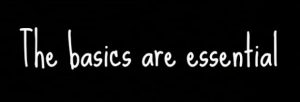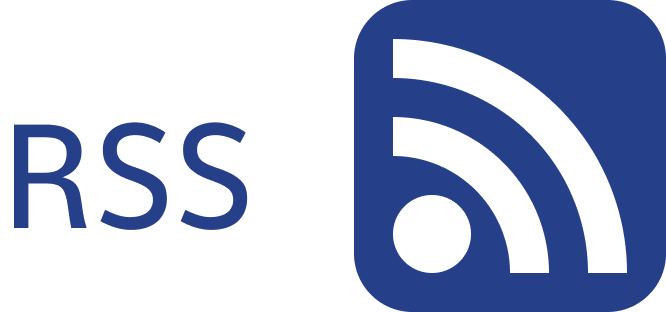![]()
Welcome back to The Project Management Toolkit series. So far, we’ve explored Employee Recognition, Collaborating with Clients, Onboarding a New Project Manager, Microsoft Project and choosing the right Project Delivery Methodology . This series breaks down the essential components of how Project Managers can take their leadership to the next level. Next, we’re taking a few steps back: Getting the basics right ensures project success.

Getting the basics right is crucial for the success of any project because it lays a solid foundation upon which all other activities are built. Essential collateral such as project charters, risk issues logs, and communication plans provide clarity, structure, and accountability, ensuring that everyone involved understands the project’s objectives, scope, and their roles. By proactively managing risks and issues, maintaining regular status check-ins, and leveraging the expertise of advisory boards or steering committees, project managers can navigate challenges effectively and keep the project on track.
Let’s take a closer look at some essential collateral every project needs but, quite surprisingly, not every project has.
Key Project Collateral Every Project Needs
1. Project Charter
The project charter is a formal document that authorizes the project and provides a clear statement of objectives, scope, and stakeholders. It serves as a reference point for all project decisions and activities.
Key Components:
- Project Objectives: Clear and measurable goals that the project aims to achieve.
- Scope Statement: Defines the boundaries of the project, including what is and isn’t included.
- Stakeholder List: Identifies all key stakeholders and their roles.
The Project Management Institute (PMI) has a great starter template for Project Charters too.
2. Project Plan
The project plan outlines the roadmap for achieving the project objectives. It includes detailed schedules, resource allocations, and task assignments. Most projects have a plan, but it must be kept up to date and be clear enough for the full team to understand their tasks and deadlines.
Key Components:
- Work Breakdown Structure (WBS): A hierarchical decomposition of the project into manageable milestones, deliverables, activities and tasks.
- Schedule: A timeline of project activities, including milestones and deadlines.
- Resource Plan: Allocation of resources, including personnel, equipment, and materials.
PMI’s Project Plan Template is also available as a great starter for your projects
3. Risk Issues Log
A risk issues log is essential for identifying, assessing, and managing risks and issues throughout the project lifecycle. It serves as a central repository for tracking potential problems that could impact the project’s success.
Key Components:
- Risk Identification: Documenting potential risks that could impact the project.
- Risk Assessment: Evaluating the likelihood and impact of each risk.
- Mitigation Strategies: Developing plans to address and mitigate risks
See the following article on Risks vs Issues, including a simple template, from the PMI
4. Stakeholder Register
The stakeholder register is a document that identifies all project stakeholders and their interests, influence, and involvement in the project.
Key Components:
- Stakeholder Identification: Listing all individuals and organizations affected by the project.
- Stakeholder Analysis: Assessing the influence and impact of each stakeholder.
- Engagement Strategies: Developing plans to engage and manage stakeholder expectations.
The PMI also has a great overview on managing stakeholders here.
5. Status Reports
Regular status reports provide updates on project progress, highlighting achievements, issues, and upcoming activities. They keep stakeholders informed and engaged.
Key Components:
- Progress Summary: An overview of completed tasks and milestones.
- Issues and Risks: Reporting on current issues and risks, along with mitigation efforts.
- Next Steps: Outlining upcoming activities and priorities.
A good (if lengthy) primer on a good status report from the PMI can also be found here.
A final note on collateral and templates, remember no project is the same, templates are there to guide project managers, they are not there to be filled in even where it doesn’t fit the project. As long as you can communicate the right information to the right people, that completes your role as a Project Manager.
Team Standups Should Be Mandatory

A common complaint from team members in a project is a lack of clarity on their deliverables, when they are required, and what dependencies they need to be aware of. Team Standups, whether daily or throughout the week, are a mandatory basic every project needs.
Team standups are a vital practice in project management and agile methodologies. These brief, focused meetings play a crucial role in maintaining team alignment, fostering communication, and ensuring that projects stay on track. They can be in-person, virtual, or mixed!
Key Benefits:
-
Enhanced Communication: Standups provide a regular opportunity for team members to share updates, discuss progress, and address any obstacles they are facing. This open communication helps prevent misunderstandings and ensures everyone is on the same page.
-
Early Problem Identification: Standups allow teams to quickly identify and address issues before they escalate. By discussing challenges and roadblocks daily, teams can develop solutions and adjust plans as needed.
-
Improved Collaboration: These meetings promote a collaborative environment where team members can offer support, share insights, and brainstorm solutions together. This collective problem-solving enhances team cohesion and productivity.
Why Steerco/Advisory Boards are good, actually.

An advisory board or steering committee (steerco) is a group of experienced individuals who provide guidance, oversight, and support to the project team. Their involvement can significantly enhance the project’s chances of success.
Key Benefits:
- Expertise: Advisory boards bring diverse expertise and perspectives, helping project managers make informed decisions.
- Strategic Alignment: Steerco members ensure that the project aligns with organizational goals and objectives, providing strategic direction.
- Support: Having a steerco can help secure resources, resolve conflicts, and navigate complex challenges.
Conclusion
Getting the basics right is essential for any project’s success. By implementing essential collateral, leveraging the expertise of an advisory board or steerco, maintaining regular status check-ins, and ensuring effective communication, project managers can ensure that their projects are well-structured, transparent, and capable of adapting to challenges.
Stay tuned for more insights in The Project Management Toolkit series, where we continue to explore the tools and techniques that elevate project management to the next level.
Contact the author at Alex.V@infotechtion.com or via contact@infotechtion.com. Find us at https://infotechtion.com/ !
You may also want to check out some of the blog posts below:



